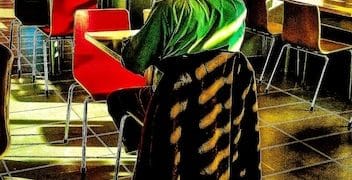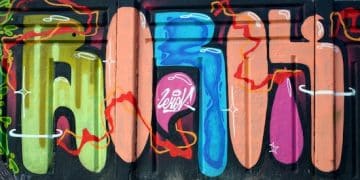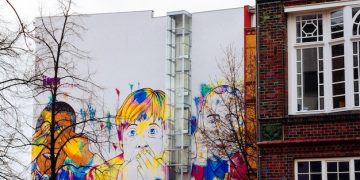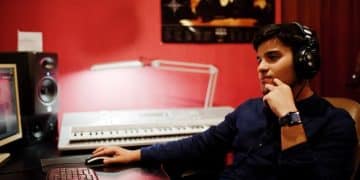Sampling Laws 2025: Impact on Hip Hop Production in the US
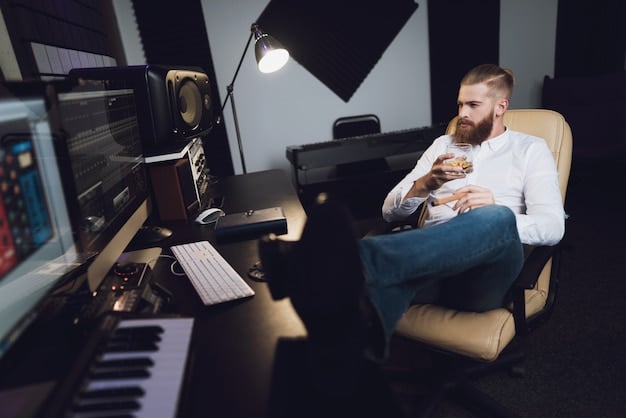
The evolution of sampling laws in the US by 2025 has significantly reshaped hip hop production, compelling artists and producers to embrace innovative sound creation, seek explicit clearances, or face substantial legal ramifications and financial penalties, fundamentally altering the genre’s creative landscape.
The landscape of music production, particularly within hip hop, is constantly shifting, significantly influenced by legal frameworks. Understanding How Has the Evolution of Sampling Laws in the US Impacted Hip Hop Production in 2025? is crucial for artists, producers, and industry professionals navigating this complex terrain. The intersection of creativity, intellectual property, and technological advancement has created a dynamic environment where legal precedents dictate artistic possibilities.
The Legal Battleground: A Brief History of Sampling and Copyright
The art of sampling, a cornerstone of hip hop production, involves taking a portion of one sound recording and reusing it in another. While seemingly straightforward, this creative practice has been entangled in a web of legal disputes since its inception. Early hip hop often operated in a legal gray area, with producers freely borrowing elements from existing tracks to construct new ones, driven by a spirit of creative innovation and a nascent understanding of copyright implications in a rapidly evolving musical genre.
The judicial system, however, began to catch up, recognizing the commercial value and intellectual property inherent in sampled works. Landmark cases in the late 20th and early 21st centuries set precedents that dramatically altered how samples could be used. These rulings moved hip hop from a relatively unrestricted sampling environment to one requiring meticulous legal clearance.
Key Legal Precedents and Their Initial Impact
Several pivotal court cases have sculpted the current legal framework around sampling. These decisions emphasized that unauthorized sampling, regardless of duration or alteration, constituted copyright infringement. The implications were profound, forcing producers to re-evaluate their creative processes and the financial viability of their productions.
- Grand Upright Music, Ltd. v. Warner Bros. Records Inc. (1991): This case, involving Biz Markie’s “Alone Again,” established that sampling, even of short excerpts, without permission was illegal.
- Bridgeport Music, Inc. v. Dimension Films (2005): Elevated the standard, stating that “a license must be obtained for every sample used,” creating a “get a license or do not sample” rule. This applied regardless of the sample’s length or recognizability.
These early rulings made it clear: the days of “fair use” as a broad defense for sampling were largely over, particularly for commercial releases. The financial burden of clearing samples became a significant barrier, especially for independent artists with limited budgets.
The initial impact of these cases was a shift towards more cautious sampling practices. Producers began to either seek licenses, which could be costly and time-consuming, or actively look for alternative sound sources. This period saw a rise in original composition, interpolation, and the use of royalty-free sound libraries, demonstrating the genre’s adaptability in the face of legal challenges.
2025’s Legal Landscape: What’s New and What Persists
By 2025, the legal landscape surrounding sampling has continued its evolution, albeit with nuances. While the foundational principles established by earlier cases remain largely intact, new technologies and industry practices have introduced additional layers of complexity and, in some instances, new avenues for legal compliance and creative expression.
Digital Fingerprinting and AI-Driven Copyright Enforcement
One of the most significant advancements influencing sampling laws by 2025 is the ubiquitous deployment of digital fingerprinting and AI-driven copyright enforcement systems. Platforms like YouTube and various streaming services have sophisticated algorithms that can identify sampled material almost instantaneously, regardless of how subtly it’s integrated into a new track. This technology has made unauthorized sampling more detectable than ever before, dramatically increasing the risk of infringement claims.
- Increased Detection: AI tools can now analyze waveforms and spectral data with unprecedented accuracy, flagging even minute similarities.
- Automated Takedowns and Revenue Redirection: Detected infringements can lead to automated content takedowns, demonetization, or, in some cases, direct redirection of royalties to the original copyright holders, often without explicit producer consent initially.
This technological leap has created a powerful deterrent, pushing producers further towards legitimate sampling practices or completely original compositions. The balance between artistic intent and algorithmic policing has become a central tension in contemporary hip hop production.
The “De Minimis” Debate and its Ongoing Relevance
The concept of “de minimis” – a legal principle suggesting that the infringement is so minor it doesn’t warrant legal action – remains a highly debated topic in 2025. While some earlier rulings largely rejected its application to sampling, particularly in the Sixth Circuit, other courts and legal scholars continue to explore its boundaries. The question often boils down to whether a listener can reasonably identify the sampled source. However, with advanced AI detection, what might be “unrecognizable” to the human ear might be glaringly obvious to an algorithm.
Consequently, producers cannot rely on “de minimis” as a robust defense. The prevailing sentiment is that if a sound is sampled from a copyrighted work, permission is required, regardless of its perceived insignificance.
The continuous refinement of legal precedents around these technologies and the ongoing discussions on “de minimis” ensure that intellectual property lawyers specializing in music remain busy. Artists and labels are keenly aware of the need to navigate these waters carefully to avoid costly litigation and ensure the longevity of their creative output.
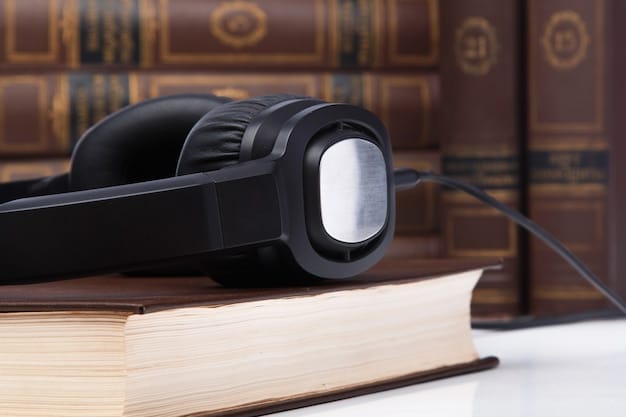
Impact on Hip Hop Production Practices in 2025
The stringent application and advanced enforcement of sampling laws in 2025 have fundamentally reshaped hip hop production, compelling artists and beatmakers to adapt their creative methodologies and business strategies. This evolution isn’t merely a hurdle but has also catalyzed new forms of innovation within the genre.
The Rise of “Sample-Free” Production and Original Composition
One of the most apparent impacts is the increasing prevalence of “sample-free” production. Faced with the high costs and legal complexities of clearing samples, many producers are opting to create original compositions from scratch. This involves a greater reliance on synthesizers, live instrumentation, and digitally generated sounds. Producers are honing their skills in arrangement, melody creation, and sound design to build unique sonic palettes without the need to borrow from existing works.
This shift has fostered a new era of musicality within hip hop, moving beyond the traditional reliance on crate digging. Artists like Metro Boomin and others have perfected crafting original beats that carry the same weight and emotional resonance as sample-heavy tracks, showcasing how creativity can thrive under constraint.
The emphasis on original composition also allows artists to retain full ownership of their master recordings and publishing rights, streamlining future monetization and avoiding ongoing royalty splits associated with licensed samples. This provides a clear financial incentive for self-sufficiency in production.
Interpolation and Replay: Legally Safer Alternatives
Interpolation (or “replaying”) has become a legally safer and increasingly popular alternative to direct sampling. This technique involves re-recording a melody, rhythm, or vocal line from another song, rather than directly extracting the original audio. While this still requires a license for the underlying musical composition (the sheet music and lyrics), it bypasses the need to clear the master recording. Master use licenses tend to be far more expensive and harder to obtain than composition licenses, offering a significant cost reduction and simpler negotiation process.
- Composition vs. Master Use Licenses: Interpolation addresses the master use license requirement, often simplifying the clearance process and reducing costs.
- Creative Reinterpretation: This method allows producers to inject their own stylistic interpretation into a classic sound, offering a fresh take while paying homage to the original.
This creative workaround allows producers to evoke nostalgic feelings or pay tribute to influences without infringing on master recording copyrights. It encourages a deeper musical understanding and often leads to unique reinterpretations that stand as artistic statements in their own right.
The Business of Sampling: Costs, Clearances, and the Underground
The business aspect of sampling has become as complex as the creative process itself. By 2025, navigating sample clearances is a full-time job for many in the industry, and the financial implications continue to shape who can afford to sample legally, further delineating the mainstream from the underground.
The Economics of Sample Clearance in 2025
Clearing samples by 2025 is an expensive and intricate endeavor. It typically involves negotiating with two separate copyright holders: the owner of the master recording (usually the record label) and the owner of the musical composition (the publisher or songwriter). Each negotiation involves an upfront fee and a royalty split, which can vary wildly depending on the prominence of the sample, the original song’s success, and the negotiating power of both parties.
For a relatively unknown sample, fees might range from a few hundred to several thousand dollars, plus a small percentage of publishing. For well-known tracks, the costs can skyrocket into tens of thousands of dollars upfront, with significant publishing and master recording royalty percentages. This pricing structure often disadvantages independent artists and smaller labels, making legal sampling a luxury.
The upfront fees cover the initial permission, while the royalty split ensures ongoing payments to the original creators based on the new song’s earnings. This dual financial burden means that successful samples can eat significantly into an artist’s profits, sometimes making the sample more valuable than the new creation it’s part of.
This economic reality naturally pushes many away from traditional sampling, compelling them to explore other creative avenues, or, as historically happened, to operate in less regulated spaces.
The Enduring Allure of the Underground and Mixtape Culture
Despite the legal and financial pressures, underground hip hop and mixtape culture continue to serve as havens for unrestricted sampling. In these less commercialized environments, the emphasis often remains on artistic expression and communal sharing rather than strict monetization. Digital platforms and informal distribution channels allow producers to experiment with samples without the immediate scrutiny of major labels or digital rights management systems.
Mixtapes, often distributed for free or at minimal cost, historically provided a space where legal clearances were overlooked. While the risk of a lawsuit still exists, the lower commercial visibility often means less attention from copyright holders. This environment allows for rapid experimentation, fostering new sounds and techniques that might later influence mainstream production, albeit with legally cleared or interpolated versions.
Many underground artists consider this freedom essential for the genre’s authentic development, viewing stringent laws as stifling creativity. This dichotomy between the legally compliant mainstream and the freer underground continues to define sampling practices in hip hop culture.
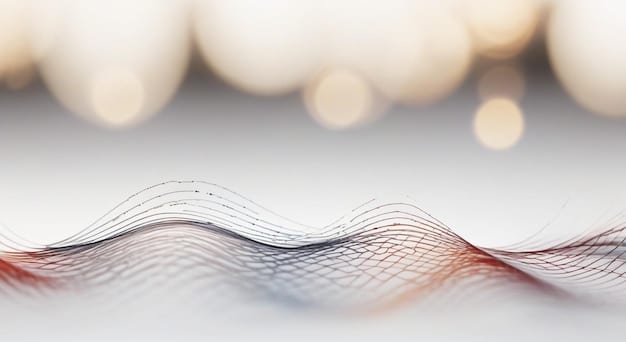
Emerging Technologies and Future Outlook in 2025
The rapid pace of technological innovation by 2025 hints at further transformations in sampling practices and legal frameworks. AI, blockchain, and new licensing models are poised to offer both challenges and solutions for hip hop producers.
AI-Generated Music and Royalty-Free Libraries
The explosion of AI-generated music and vast libraries of royalty-free sounds is a game-changer. AI can compose original melodies, generate drum patterns, and create unique soundscapes that are entirely free of copyright restrictions from human-composed works. This offers an accessible and legally safe alternative for producers seeking distinctive sounds without the hassle of clearances.
Platforms offering AI-generated music tools and extensive royalty-free libraries are growing, empowering a new generation of producers to create original content quickly and efficiently.
- New Creative Avenues: AI provides tools for generating novel musical ideas and textures.
- Reduced Legal Risk: Using royalty-free or AI-generated sounds virtually eliminates copyright infringement concerns.
However, the question of copyright ownership for AI-generated works itself is an evolving legal debate. While current general consensus leans towards such works being uncopyrightable if no human intervention is involved, the legal landscape is still developing, suggesting future complexities in this area.
Blockchain and Automated Licensing Systems
Blockchain technology offers a promising solution for streamlining sample clearance. By creating immutable records of ownership and usage, blockchain platforms could enable automated micro-licensing. This means producers could instantly license small segments of music at a fair price, with royalties automatically distributed to all rights holders in real-time. This system would dramatically reduce administrative overhead and make legal sampling more accessible and transparent.
While still in its nascent stages, several blockchain-based music platforms are developing tools to facilitate this. Their success hinges on widespread industry adoption and interoperability among various rights holders and platforms.
Such innovation could democratize sampling, allowing a wider range of artists to legally utilize existing sounds, thereby fostering a new wave of creative collaboration and innovation within hip hop.
The continued dialogue between technology innovators, legal experts, and the music industry will be critical in shaping how these tools are integrated and regulated, ultimately determining their impact on future hip hop production.
Creative Adaptations and the Evolution of Sound
The stringent sampling laws haven’t stifled creativity in hip hop; rather, they’ve spurred it into new forms. Producers and artists in 2025 are demonstrating remarkable adaptability, pushing the boundaries of sound design and composition in innovative ways.
Beyond the Loop: Sound Design and Synthesis
Producers are increasingly focusing on intricate sound design and synthesis, moving beyond simply looping a pre-existing record. They are manipulating raw waveforms, using advanced software, and creating bespoke sounds that are entirely their own. This involves extensive layering, granular synthesis, and modular synthesis techniques to craft unique textures and melodic elements.
This approach moves the emphasis from discovery (finding the perfect sample) to creation (building the perfect sound). It requires a deeper technical understanding of audio engineering and a more experimental mindset, fostering a unique sonic identity for artists who master it.
The accessibility of powerful digital audio workstations (DAWs) and vast virtual instrument libraries has significantly aided this shift, putting professional-grade sound design tools within reach of independent producers.
Vocal Samples and Field Recordings: New Avenues
While instrumental samples from commercial tracks remain legally challenging, producers are exploring other forms of sampling. Vocal samples from less commercial sources, such as public domain recordings, acapellas from obscure tracks, or even self-recorded vocalizations, offer creative potential with fewer legal entanglements.
Field recordings—capturing sounds from the environment—have also gained prominence. The ambient sounds of a city, the rhythm of everyday objects, or natural soundscapes can be woven into beats, providing unique and copyright-free textures. This pushes producers to engage with their surroundings in a more acoustic way, transforming the mundane into musical elements.
These methods allow producers to maintain the foundational spirit of sampling—recontextualizing sounds to create new meaning—while adhering to contemporary legal requirements, further diversifying the sonic landscape of hip hop.
These creative adaptations underscore the resilience of hip hop’s innovative core. The genre has always absorbed new influences and technologies, and the current legal environment is just another catalyst for its continuous evolution and reinvention. The challenges posed by sampling laws are being met with ingenious and often genre-defining solutions.
Looking Ahead: The Future of Sampling and Hip Hop
As we navigate further into the 21st century, the relationship between sampling laws and hip hop production will likely continue its dynamic evolution. While direct, unauthorized sampling of commercial tracks faces increasing scrutiny, the future holds promise for new models of creativity and compliance.
The Balance Between Protection and Innovation
The core tension remains the balance between protecting the intellectual property of original creators and fostering innovation in new music. Copyright laws are designed to incentivize creation by ensuring creators are compensated. However, overly restrictive interpretations can stifle transformative art forms like hip hop, which thrive on repurposing and recontextualization.
Future legal discussions will likely focus on finding equilibrium. This might involve tiered licensing systems, clearer definitions of what constitutes fair use in the digital age, or even new legislative frameworks that acknowledge the unique characteristics of sampling as a creative art form.
Dialogue between legal bodies, industry stakeholders, and artists is essential to shape policies that protect rights while allowing for artistic growth and experimentation. The goal should be a framework that encourages both original creation and transformative use.
The Ongoing Role of Education and Advocacy
Education surrounding copyright law will remain paramount for hip hop producers. Awareness of licensing procedures, the risks of infringement, and available legal alternatives is crucial for safeguarding careers and fostering sustainable artistic practices. Workshops, online resources, and mentorship programs focusing on music law will empower emerging artists to make informed decisions.
Furthermore, advocacy groups championing artists’ rights and promoting nuanced approaches to copyright reform will play a critical role. By articulating the unique creative processes of hip hop, these groups can influence policy-makers to consider the genre’s specific needs and contributions.
Ultimately, the future of sampling in hip hop will be shaped not just by legal rulings, but by the collective efforts of artists, legal professionals, and industry leaders committed to fostering both creation and respect for intellectual property in an ever-changing musical landscape.
| Key Aspect | Brief Impact Summary |
|---|---|
| ⚖️ Stricter Enforcement | Legal precedents and AI detection make unauthorized sampling riskier than ever, leading to automated takedowns and financial penalties. |
| 💸 Increased Costs | Sample clearances involve significant upfront fees and royalty splits, often pricing out independent artists from legal sampling. |
| 💡 Creative Adaptations | Producers are shifting to original composition, interpolation, AI-generated sounds, and field recordings to avoid legal issues. |
| 🔄 Future Outlook | Blockchain technology and ongoing legal debates aim for a balance between copyright protection and fostering musical innovation. |
Frequently Asked Questions About Sampling Laws in Hip Hop
Sampling laws have become strict primarily due to landmark court cases that established clear precedents for copyright infringement. By 2025, advanced digital fingerprinting and AI detection technologies further enhance enforcement, making it nearly impossible to use copyrighted material without permission and avoid detection, protecting the intellectual property of original creators.
Direct sampling involves using an actual piece of audio from an existing recording. Interpolation, contrarily, means re-recording or recreating a melody or line from a copyrighted song. Direct sampling requires both master use and composition licenses, whereas interpolation only requires a composition license, making it a legally less complex and often cheaper alternative.
While “de minimis” theoretically allows for negligible use, court rulings, particularly the influential Bridgeport Music case, have largely rejected this defense for sampling. By 2025, with sophisticated AI detection, even minor samples are identifiable. Therefore, relying on “de minimis” is highly risky, and seeking clearance for any sampled material is generally recommended.
By 2025, AI primarily aids in detecting uncleared samples, leading to more rigorous enforcement. However, AI also generates royalty-free music, offering legally safe alternatives. Blockchain holds promise for simplifying the future of licensing by creating transparent, automated systems for micro-licensing samples and ensuring immediate, accurate royalty distribution to rights holders.
Absolutely. Producers who find sample clearances cost-prohibitive can opt for original compositions using synthesizers and live instruments, utilize royalty-free sound libraries, or employ interpolation techniques. Additionally, exploring vocal samples from public domain sources or incorporating field recordings offers unique and legally safer creative avenues, broadening the sonic palette of hip hop.
Conclusion
The evolution of sampling laws in the US has undeniably reshaped hip hop production by 2025, transforming it from a burgeoning art form often operating in a legal gray area to a sophisticated industry demanding meticulous legal compliance. While stringent regulations and advanced detection technologies pose challenges, they have simultaneously fueled remarkable innovation within the genre. Producers are now mastering original composition, embracing interpolation, and exploring new sound design techniques, including AI-generated audio and field recordings, to navigate the complex legal landscape. The shift has not extinguished the creative fire of hip hop but has instead forced a creative pivot, ensuring that the genre continues to evolve and push sonic boundaries while respecting the intellectual property rights that underpin musical creation. The ongoing dialogue between legal frameworks and artistic expression promises a future where technology might even simplify licensing, potentially ushering in a new era of democratized and legally compliant sampling.

